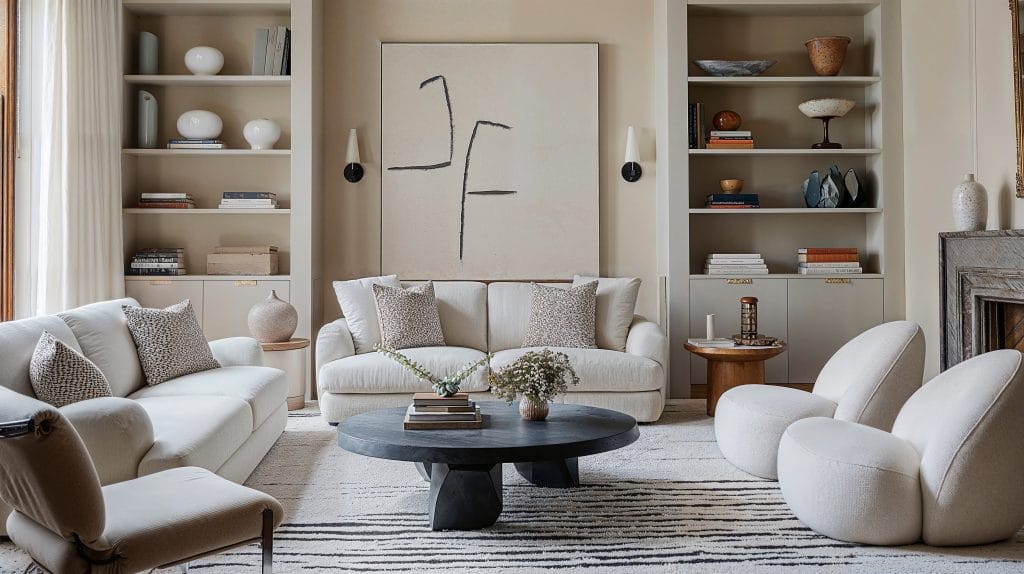Transform Your Home With Vital Concepts of Interior Design and Visual Appeals
By comprehending the impact of shade concept and the significance of appearance and patterns, one can produce areas that are not only aesthetically enticing but also deeply personal. Achieving this stability entails even more than simple decoration; it includes a calculated setup and an eager understanding of just how each element interacts within a room.
Understanding Color Concept
Understanding the principles of shade theory enables designers to develop spaces that resonate emotionally with passengers while meeting practical requirements. Each group plays an essential role in establishing harmony within a room.
The psychological influence of shades is extensive; cozy shades such as reds and oranges stimulate energy and warmth, while awesome tones like blues and environment-friendlies promote calmness and harmony. In addition, the usage of complementary colors enhances visual interest, creating striking contrasts that can raise a room's charm.
Neutral shades, on the other hand, function as a functional background, permitting various other layout components to radiate. It is important to consider aspects such as lighting and the space's objective when choosing a shade combination, as these can modify the assumption of colors throughout the day.
Eventually, a well-considered color pattern can transform a space, fostering a sense of convenience and design that straightens with the inhabitants' preferences. Proficiency of shade theory is, as a result, a crucial ability for any type of interior designer intending to produce harmonious and welcoming environments.
Achieving Equilibrium in Design
How can designers achieve a sense of stability in their rooms? Achieving balance in layout is fundamental to producing harmonious interiors. Developers can make use of three key sorts of balance: in proportion, unbalanced, and radial. In proportion equilibrium involves arranging elements uniformly around a main factor, fostering a feeling of order and serenity. This type often features sets of furnishings or artwork, boosting aesthetic security.
Unbalanced equilibrium, on the various other hand, relies upon differing aspects that still accomplish a cohesive look. This strategy permits even more vibrant and informal plans, providing passion while maintaining stability. By carefully choosing differing dimensions, shades, and appearances, developers can produce a visually compelling space that feels well balanced yet energetic.
Radial balance stresses a central prime focus with elements emitting outward. This design is frequently seen in round layouts, where furnishings and style create a cohesive surround that attracts the eye internal.
Eventually, attaining equilibrium requires thoughtful consideration of range, percentage, and the partnerships in between components. Architecture Firm. By skillfully applying these balance principles, designers can transform rooms right into atmospheres that feel both aesthetically pleasing and functionally harmonious, boosting the total experience for passengers
Value of Spatial Recognition

A keen sense of spatial awareness allows developers to identify prime focus within a room, leading the customer's focus to crucial attributes while maintaining a total feeling of unity. It also helps in the calculated positioning of lighting, which can dramatically affect the assumption of area and mood. In addition, understanding spatial relationships makes it possible for the designer to accommodate the details requirements of citizens, making sure that each area serves its intended objective without endangering visual appeals.
Eventually, spatial awareness is vital for taking full advantage of the potential of any type of indoor space. By meticulously thinking about the interplay in between dimensions, layout, and feature, developers can go now produce environments that not only fulfill sensible needs but also evoke a feeling of convenience and elegance, enhancing the overall living experience.
Integrating Appearance and Patterns
Accepting a diverse variety of textures and patterns can considerably enhance the visual and responsive charm of an indoor space. The critical use different products-- such as timber, metal, material, and stone-- develops depth and passion, making an area feel more like this welcoming and vibrant. As an example, combining smooth surface areas with harsh appearances can establish an equilibrium that attracts the eye and involves the senses.
When incorporating patterns, consider both scale and rep. Large patterns can work as focal points, while smaller sized, subtle layouts can enhance other aspects without overwhelming the room. Layering patterns, such as pairing flower pillows with striped tosses, adds complexity and a feeling of consistency if implemented attentively.
It is additionally crucial to maintain a cohesive shade scheme, making certain that structures and patterns interact instead of complete for interest. By selecting a couple of key appearances and patterns, you can create a linked aesthetic that mirrors your personal design while boosting the overall atmosphere of the area. Inevitably, the cautious incorporation of these components can transform an ordinary area into an innovative atmosphere abundant with personality and warmth.
Individualizing Your Room
Developing a space that shows your character is vital to achieving a really inviting atmosphere. Personalization in interior design enables you to infuse your unique design and interests right into your home, changing it from a mere sanctuary into a refuge that talks with that you are. Begin by selecting a shade scheme that reverberates with your feelings-- bold shades can energize, while soft tones supply tranquility.
Incorporate art work and style that reflect your interests, whether it be travel, nature, or abstract ideas. Displaying individual collections, such as books, photographs, or keepsakes, can stimulate treasured memories luxury interior design and create centerpieces within a room. In addition, consider personalizing useful items, like upholstered furniture, to align with your aesthetic choices.

Conclusion
To conclude, the transformation of a home through the crucial concepts of interior decoration and looks demands a detailed understanding of shade concept, equilibrium, spatial awareness, appearance, and personalization. Each aspect adds significantly to developing an unified and functional living setting - interior design firms. By attentively incorporating these concepts, individuals can enhance the visual appeal and emotional resonance of their spaces, eventually fostering a home that shows distinct identities while giving comfort and usefulness